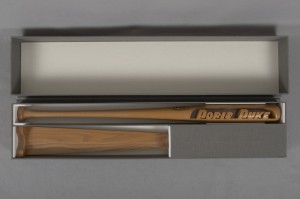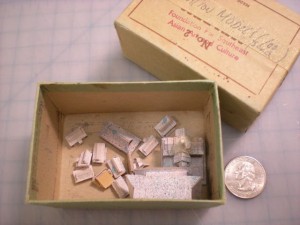Written by Jennifer Blomberg, Senior Conservation Technician
Sometimes you just never know what will come through the lab for boxing. These items from the Doris Duke Archives were recently sent to us for custom enclosures. Boxing a Louisville Slugger baseball bat, a football, and weathervane can present obvious challenges due to their unusual shapes and dimensions. To read more about the provenance of these materials, please see the Rubenstein Library’s blog post.
Goals for Housing
The main goals for creating these housings were to protect the fragile materials while providing easy access for researchers. They had to fit the unusual shape and dimensions of the materials, keep them from shifting inside the box, and allow them to be shelved easily with other archival materials. Designing and fabricating these boxes offered a real challenge.
Creating the Enclosures
I made “telescoping” boxes for the baseball bat and weathervane. This type of box consists of a bottom tray that fits the object, and a separate lid that fits over the bottom tray. The football got a standard drop-spine or “clamshell” box. Each tray was lined with Volara foam to provide cushioning for the object.
Overall, I am content with the final enclosures and believe that they achieve the goals that we sought out to accomplish. These will provide supportive and protective enclosures, while also making them available and accessible to researchers.







